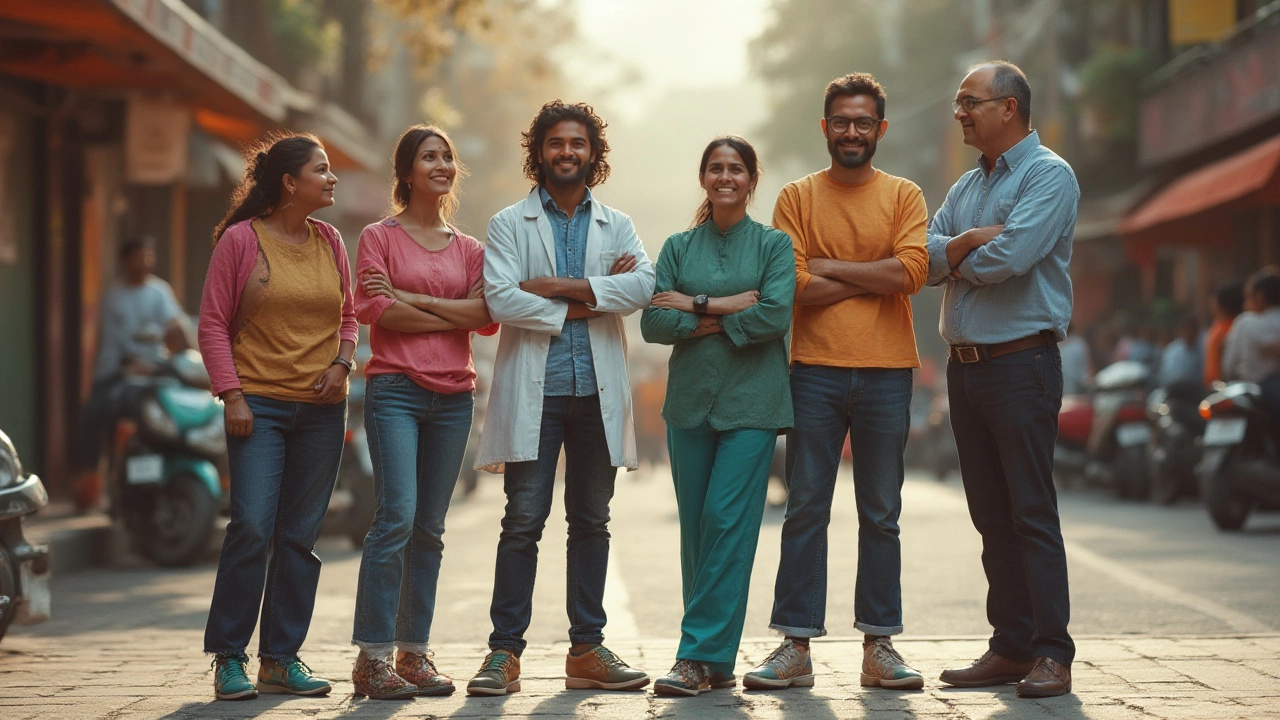Most Comfortable Shoes for Standing All Day: Top Picks & What Really Matters

Ever finish a long shift and feel like your feet are staging a protest march? The wrong shoes can turn a normal workday into an endurance test. Yet, some folks stand for ten hours and report barely an ache. So, what’s their secret? It’s not fancy foot creams or hidden insoles—it’s choosing the right shoe. Picking the most comfortable shoes for standing all day isn’t just about looks or hype. It means knowing what really supports your feet, what eases the pressure, and why cheap sneakers just don’t cut it after hour six. Ready for some (surprisingly science-backed) truth about comfy shoes?
Why Standing All Day Wrecks Your Feet—And What to Watch Out For
If your job keeps you on your feet—think nurses, teachers, retail workers, or chefs—you’ve probably felt aches that creep up before lunchtime. Humans aren’t built for nonstop standing on hard surfaces. The constant pressure flattens your arches, restricts blood flow, and tires out muscles you didn’t know you had. Foot pain isn’t just a minor annoyance; left unchecked, it can trigger knee, hip, and back pain too. Reportedly, over 60% of people who stand more than six hours a day deal with chronic foot discomfort.
The trouble starts with your arches. When unsupported, they collapse under constant weight, pulling on muscles and tendons. And did you know hard floors—think tile or concrete—absorb almost zero shock? That means every step sends impact up your legs. Here’s a quick look at what happens, according to the American Podiatric Medical Association:
| Standing Issue | How It Affects Feet |
|---|---|
| Lack of arch support | Causes plantar fasciitis, heel pain |
| Hard surfaces | Leads to sore heels, tired arches |
| Poor cushioning | Worsens pain in balls of feet |
| Tight toe boxes | Triggers bunions, blisters |
| Cheap insoles | No protection against shock |
The good news? The most comfortable shoes for standing all day address every issue on that list. But comfort doesn’t look the same for everybody—people with flat feet, high arches, and wide feet all have different needs. Ignore that, and you’ll end up in the foot pain club.
Features That Make or Break Comfort in Shoes for All-Day Standing
Forget celebrity endorsements or shoe commercials with people dancing. The secret to comfort is built in the design and materials. You can usually spot a winner by looking at five features: arch support, cushioning, fit and width, breathability, and outsole grip. Let’s break down why these matter and how each one feels after a full day.
Arch Support: People talk about it all the time, but what does it really mean? Shoes with good arch support gently hold up the arch of your foot, which prevents it from collapsing and keeps pain away—especially important for folks with flat feet or high arches. Brands like Brooks and New Balance often nail this, and it’s why those brands are frequent faves among nurses and chefs.
Cushioning: Ever step in a shoe and feel like you’re walking on clouds? That’s cushioning at work. Look for shoes with memory foam, EVA midsole, or gel inserts—these soak up shock and prevent heel bruises. But watch out for shoes that are too soft; they can lack support and make you work harder to keep balance.
Fit & Width: A snug, custom-feeling fit is key. Too tight? Blisters. Too loose? Blisters. Shoes that come in multiple widths—or have stretchy mesh uppers—let your feet swell naturally without pinching. Don’t be shy about trying wide or even extra wide sizes if your feet get puffy after hours upright.
Breathability: Feet sweat (a lot) when standing all day. Mesh uppers or special linings allow air in and keep things dry. Less sweat means less odor, fewer blisters, and more lasting comfort.
Outsole Grip: Slipping in the break room or stockroom is the last thing you want. Non-slip outsoles prevent falls, especially if you work around liquids or on polished floors. Rubber outsoles are hard to beat for traction and durability.
- Pick shoes with removable insoles if you’ll add your own orthotics.
- Rotate pairs if you stand every day—shoes need recovery, just like your muscles.
- Try shoes on late in the day, when your feet are at their biggest.
- If you work in healthcare or kitchens, look for shoes designed specifically for those environments—they often nail all the above.
These details may seem small, but skip even one and you’ll feel it before the shift ends.

Top Picks: Shoes That Actually Make Standing All Day Bearable
You know those shoes that every nurse or teacher in your building seems to have? There’s a reason they’re so popular—and it isn’t just style. Certain brands have basically made it their mission to create the world’s most comfortable shoes for all-day standing. Let’s break down which models actually live up to the hype, why they get rave reviews, and the insider hacks to maximize comfort. As of 2025, here are some of the best-rated options according to actual standing workers and podiatrist recommendations:
- Brooks Ghost 15: The Ghost keeps showing up on top comfort lists for good reason. It’s packed with DNA LOFT cushioning—think stretchy, bouncy, but never mushy—and offers firm arch support that’s out-of-the-box ready for wide or flat feet.
- New Balance 990v6: Known for its wide sizing options and ABZORB midsole tech, this model prioritizes everyday support without feeling clunky. Many folks with plantar fasciitis say it’s a lifesaver.
- HOKA ONE ONE Bondi 8: This brand exploded in hospitals and kitchens recently. Their Bondi 8 delivers what they call a “max cushion” ride, yet it stays lightweight. The rocker shape reduces foot fatigue by propelling you forward with every step. If you’re standing still for hours, the cushy support makes a huge difference.
- Dansko Professional Clog: The original workhorse for nurses. Its roomy toe box, shock-absorbing sole, and just-enough arch support explain its staying power. Plus, it’s slip-resistant and easy to clean—ideal for medical or food service settings.
- ASICS Gel-Kayano 31: These running shoes are now a favorite among retail and factory workers due to their legendary gel cushioning and Trusstic stability system. Even after 12 hours, users mention their feet “don’t feel pounded into gravel.”
- Skechers Work Sure Track: Designed just for workplaces where spills happen. They’re surprisingly comfortable, slip-resistant, and come with memory foam insoles that cradle your feet until quitting time.
Few quick stats to back these up: In a recent survey from the National Retail Federation, 8 out of 10 workers who switched to purpose-designed supportive shoes saw a drop in foot and back pain. Plus, podiatrists confirm that people who invest in good quality supportive shoes miss 30% fewer workdays from foot pain than those in regular sneakers.
Here’s the trick: don’t be afraid to try men’s models if women’s options feel tight (or vice versa). Sometimes the sizing and support can be just a little different for the same style shoe. And always break in new shoes before tackling a 10-hour shift. Walk around your house; add over-the-counter insoles if you still feel pressure points.
Smart Tips to Keep Feet Happy During Long Days
Shoes are just part of your comfort kit. There are a bunch of little things that make long days on your feet a lot easier. You’d be surprised how much these tricks help if your job keeps you upright for hours.
- Sock Strategy Matters: Avoid cotton, which traps sweat. Go for moisture-wicking synthetic or merino wool blends. Your feet will stay dry, less smelly, and way less prone to blisters.
- Custom Insoles: Not every foot gets along with the insole provided. Swapping in a supportive aftermarket insole can tailor your fit. If you’ve got prescription orthotics, make sure the shoe’s insole is removable.
- Foot Exercises: Simple moves like rolling a tennis ball under your arches, stretching your toes, or doing calf raises can ease tension and boost circulation after your shift.
- Elevate and Ice: When you get home, pop your legs up and try a ten-minute ice bottle roll under each foot. It lowers swelling and nips aches before they settle in for the night.
- Shoe Rotation: Just like athletes alternate sneakers, people who stand a lot should swap shoes on different days. It prevents uneven wear and keeps your feet from forming sore spots in the exact same place every day.
- Know When to Replace: If you’re wearing down the tread, noticing holes in mesh, or losing support, it’s time for a new pair—usually every 6-12 months if you’re on your feet most days.
Consider this: Research from a 2023 European foot health study found that almost half of chronic pain cases in workers were solved by simply upgrading their footwear and changing socks. It’s not magic, but it works.
Picking out the most comfortable shoes for standing all day isn’t about splurging on the fanciest pair or getting whatever’s trendy this week; it’s about listening to your body and giving your feet a break during the daily marathon. The right shoes cushion, support, and protect—so when you finally kick them off at the end of the day, your feet actually thank you.
- Jul, 9 2025
- Violet Greenfield
- 0
- Permalink
Written by Violet Greenfield
View all posts by: Violet Greenfield